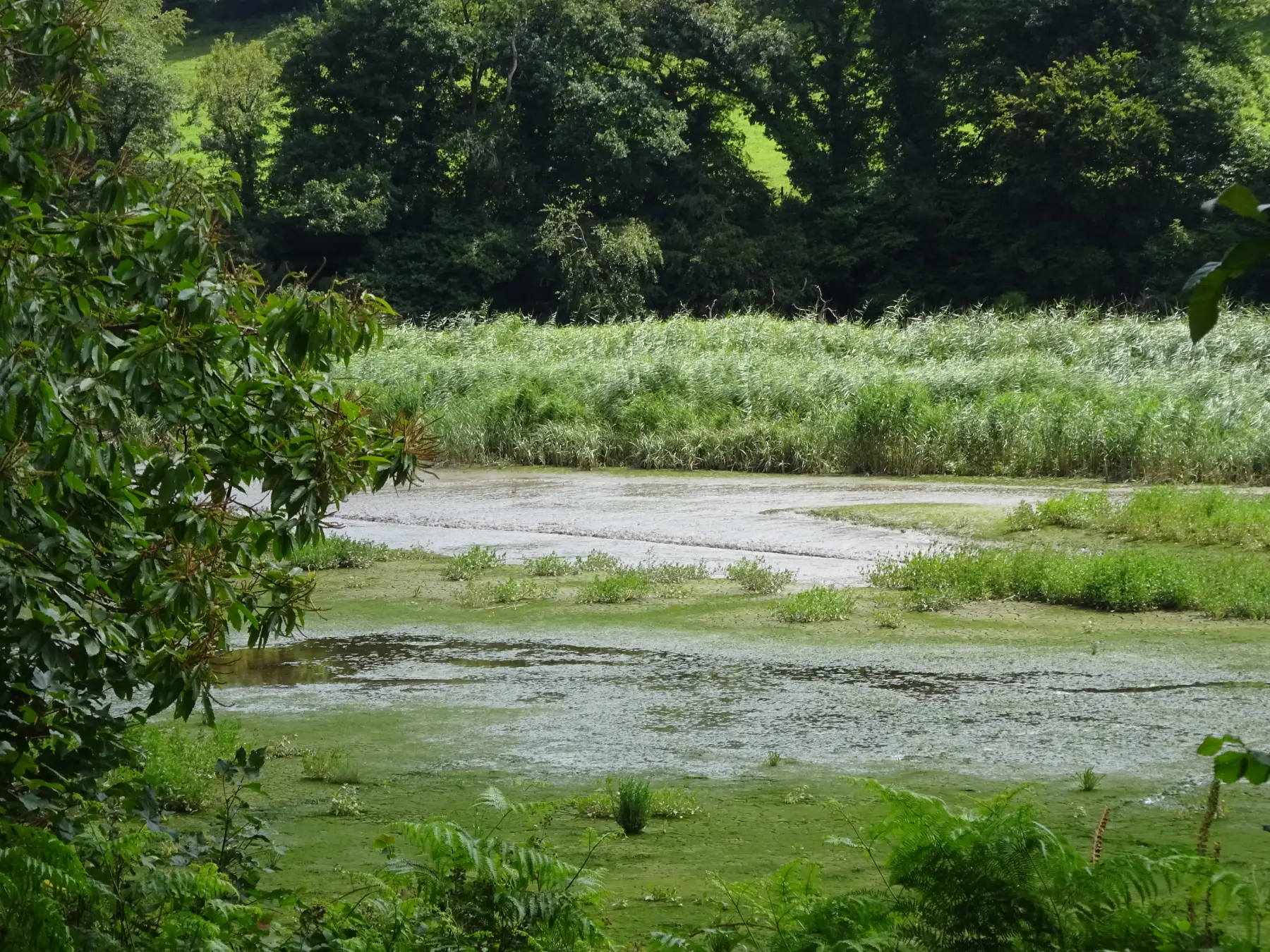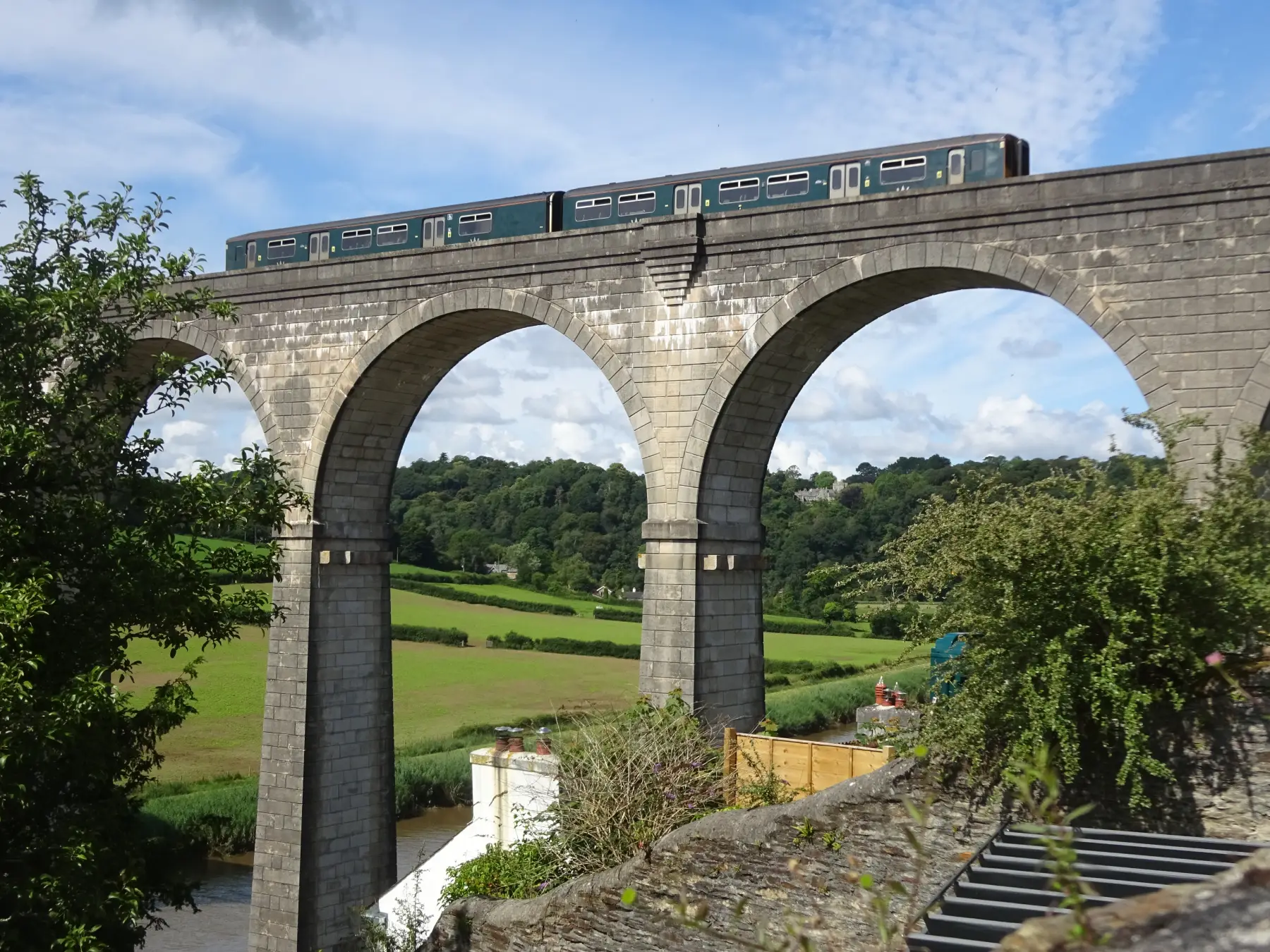Bear left and negotiate a steep descent over patches of bare rock. Pause at a rather exposed viewpoint, looking straight upriver towards the elegant 12-arched viaduct. Continue on, now below Cotehele’s garden fence.
The path drops towards the river and passes a small stone chapel, dedicated to St George and St Thomas à Becket and built around 1490 by Sir Richard Edgcumbe (see below). During the Wars of the Roses, as a Tudor supporter, Sir Richard was pursued by followers of Richard III; he escaped from them at this spot.
The chapel was built after the king’s defeat at the Battle of Bosworth.
The broad, level track passes an area that was reclaimed from the river to provide farmland in 1850; the enclosing embankment has now been breached to enable the development of reedbed and intertidal marsh, to attract species such as shelduck, little egret and redshank, and to alleviate flood risk in this part of the valley.
When quayside buildings come into view ahead, bear left past the carpark and picnic area; keep ahead past an old warehouse and limekilns to reach The Edgcumbe (refreshments). Lying up here is the Tamar sailing barge Shamrock, built in 1899 to carry cargoes between Plymouth and Torpoint manure works; she worked along the Tamar and Lynher rivers, and along the coast. She was bought by the National Trust in 1974.







